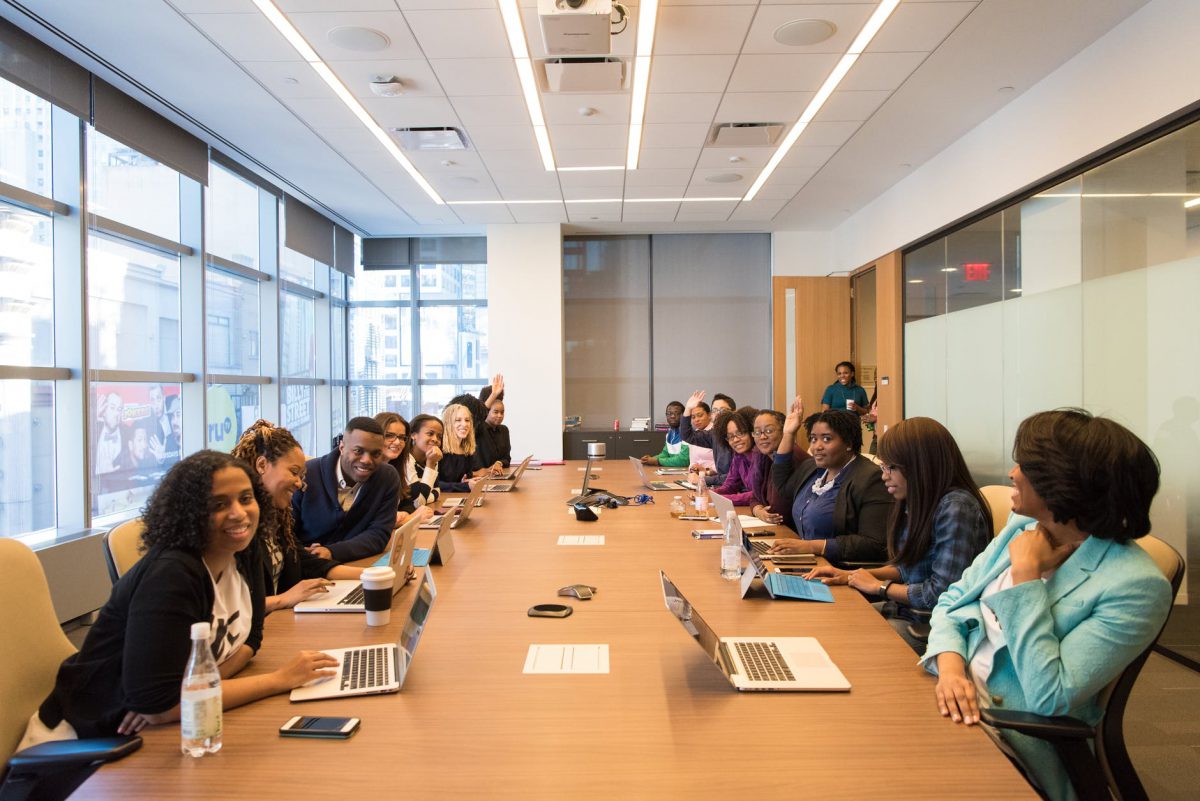Experts are warning of a ‘turnover tsunami’ poised to hit the U.S. in the coming months as businesses reopen and the economy rebounds. As part of this shakeup, employers will lose a wealth of institutional knowledge, but may have the opportunity to acquire some new skills they found it difficult to recruit for prior to and during the pandemic. One thing that’s for certain is that many employers will have to say farewell to some star players. This goodbye doesn’t have to be forever, though. The opportunity to rehire some of these individuals may present itself down the line, especially if the company invests in a corporate alumni network.
Just as community and communication are absolutely critical for current employees, keeping former employees connected to colleagues and company news is similarly important. Corporate alumni networks are the easiest way to achieve this, and you may even find that employees have already built one or more informal communities that you can tap into to get started. Read on to learn more about the benefits of corporate alumni networks and the first steps you should consider when looking to start one.
3 reasons why starting a corporate alumni network is one of the best decisions you can make this year
Recruiting top talent is an expensive endeavor. Estimates suggest that the cost to hire a new employee can stretch from the mid-four-figures all the way up into the tens of thousands of dollars. Accordingly, it can be quite a blow when a star player chooses to leave your organization after all the time and money you’ve invested in bringing and keeping them there. As mentioned above though, all of that work doesn’t have to go to waste. You can leverage a corporate alumni network to keep your top performers in the company loop so that when it’s time to make their next move, you’re the first place they think of going.
If former employees maintain strong relationships with current staff, and frequently see exciting updates about your company’s progress, they’ll be much more likely to tire of being on the outside looking in and want to return to the team. In other words, corporate alumni networks are a great way to build FOMO, or a fear of missing out among those who have left, in order to passively encourage them to return. Approximately 15% of employees say they’ve boomeranged back to a former employer, and 40% say they would consider it. This number is heavily skewed towards younger generations, with 46% of Millennials saying they would consider boomeranging back to a company they previously worked for, while just 33% of Gen X-ers and 29% of Baby Boomers reportedly said the same.
Bringing back top talent after they’ve been with another employer for a period of time has numerous benefits. You already know they can be successful with your organization, so it greatly derisks the hiring process. Furthermore, while they may have been stars when they were initially with your company, they’ve now had the opportunity to learn new skills and systems, so they’ll be even better equipped this second time around. They’ll also likely need less training because they’ll already know how a lot of things work at your organization. Last but certainly not least, they’ll likely appreciate all the great things about your company culture more than ever after having seen what else is out there. While every situation will differ, from a high-level perspective there are almost no downsides to bringing former colleagues back onto the team. Running a corporate alumni network helps ensure that you keep in touch with these employees to help facilitate their return, no matter what they do next.
Another benefit of keeping former employees involved through a corporate alumni network is for employer branding purposes. More than 60% of GEN Z jobseekers prefer to hear about opportunities directly from a current or former employee. When looking to recruit from this demographic, the more employee ambassadors you have on the ground, the more successful you’ll be. Sharing positive company updates with former team members will ensure they keep your company in mind when speaking with potential jobseekers, and will set them up to make a strong pitch.
How to get started with building a corporate alumni network
While it can confer many benefits, launching a corporate alumni network doesn’t have to be difficult. In fact, it can be pretty straightforward. Follow the steps below and you’ll be off to a great start:
- Update processes to collect the necessary data. In order to cultivate a robust corporate alumni network, you’ll need email addresses for employees after they’ve left the company. You may choose to ask employees for their email address as part of the off-boarding process, or you could even set up a system to provide employees alumni addresses as many universities do. In theory, you could also keep the email address the employee originally applied to your company with, however that may have changed in the time since they started. Regardless of which method you choose, having a way to contact employees after they’ve left is key to your corporate alumni network’s success.
- Ask employees about existing networks. Former employees may have already assembled somewhere whether over WhatsApp, LinkedIn, Slack, or elsewhere. Tap into these networks, and if it makes sense, explore potentially formalizing them. In other words, if there is already a solid base of alumni congregating on LinkedIn, then it probably doesn’t make sense to reinvent the wheel. Just put some power and time into ensuring consistent activity in the LinkedIn community, and you can ramp up much more quickly than if you started from scratch.
- Pick your platform. If there isn’t an existing community you can tap into, then you’ll need to decide where you want to host your network. The options above are a start, or there is even dedicated corporate alumni network software you can purchase. Workrowd can actually fulfill this use case as well, by simply having a private krowd where you invite past employees to join with their non-company email addresses. Whatever you choose, make sure that it’s flexible to meet your needs, and above all, user-friendly. If your platform is clunky or difficult to use, former employees won’t make the time to learn it.
- Identify your manager. Few communities actually run successfully on their own, so you’ll need to dedicate at least part of an employee’s time to managing and maintaining the corporate alumni network. This individual should be in charge of inviting new employees as they leave, making sure they get signed up, updating information and ensuring everything stays fresh, etc. Without someone whose job it is to keep the community running, these spaces can stall and grow stagnant quite quickly, so don’t overlook the importance of assigning someone this role.
- Invite former team members. Last but certainly not least, reach out to as many former team members as you have contact information for in order to start building up your network. While you may not be able to reach everyone, and not all of those whom you do reach will be interested if it’s a long time after they left, starting with a solid base of members will help set your corporate alumni network up for success.
Staying in touch with employees after they leave is an important piece of the talent management puzzle in today’s economy. If you’re not keeping star players connected to your company’s ecosystem, you’re wasting crucial dollars between the investment you made to bring them to the team in the first place combined with the money you could save by rehiring them down the line. If you’d like to explore Workrowd’s solution for a corporate alumni network that you can manage in the same place as your communities for current employees, drop us a line at hello@workrowd.com. We’d love to hear from you.











